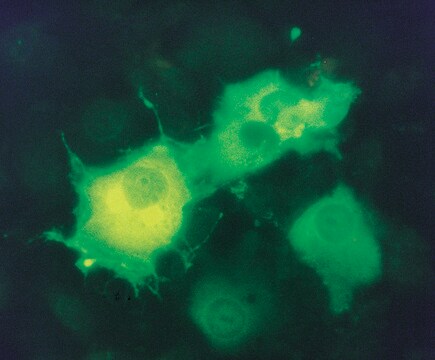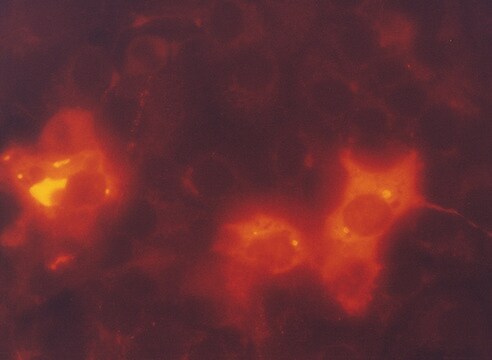05-584
Anti-Tie2/TEK Antibody, clone Ab33
clone Ab33, Upstate®, from mouse
Synonym(s):
CD202b antigen, TEK tyrosine kinase, endothelial, Tunica interna endothelial cell kinase, Tyrosine-protein kinase receptor TEK, Tyrosine-protein kinase receptor TIE-2, p140 TEK, soluble TIE2 variant 1, soluble TIE2 variant 2, venous malformations, multip
About This Item
Recommended Products
biological source
mouse
Quality Level
antibody form
purified immunoglobulin
antibody product type
primary antibodies
clone
Ab33, monoclonal
species reactivity
human, rat, pig, mouse
manufacturer/tradename
Upstate®
technique(s)
immunohistochemistry: suitable
immunoprecipitation (IP): suitable
western blot: suitable
isotype
IgG1κ
NCBI accession no.
UniProt accession no.
shipped in
wet ice
target post-translational modification
unmodified
Gene Information
human ... TEK(7010)
General description
Specificity
Immunogen
Application
Immunohistochemistry: Reported to detect Tie2/TEK in frozen, Triton-treated sections.
This antibody is not suitable for paraffin-embedded sections.
Quality
Western Blot Analysis: 0.2-1 μg/mL of this antibody detected Tie2/TEK in RIPA lysates from HUVEC cells.
Target description
Physical form
Other Notes
Legal Information
Not finding the right product?
Try our Product Selector Tool.
recommended
Storage Class
10 - Combustible liquids
wgk_germany
WGK 1
Certificates of Analysis (COA)
Search for Certificates of Analysis (COA) by entering the products Lot/Batch Number. Lot and Batch Numbers can be found on a product’s label following the words ‘Lot’ or ‘Batch’.
Already Own This Product?
Find documentation for the products that you have recently purchased in the Document Library.
Our team of scientists has experience in all areas of research including Life Science, Material Science, Chemical Synthesis, Chromatography, Analytical and many others.
Contact Technical Service








